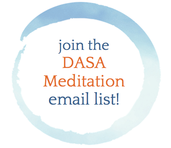- a brief history of meditation in the U.S.
- the difference between meditation and mindfulness
- the CDC's report on popularity and growth in the U.S.
- four user-friendly forms of relaxation
- an easy-to-understand reference guide to relaxation
- examples of how to easily blend mind-body relaxation into your day
- a comparative medical study which defines the advantages of non-directive meditation
Over 100 years ago, in 1920, Swami Paramahansa Yogananda arrived from India to give his first speech in America. Five years later, he returned to be welcomed by LA’s limelight at the Philharmonic Auditorium. There was hesitation and concern, yet Yogananda felt sure he would be well-received by open minds, and he was right. The people of Los Angeles flocked to see Yogananda speak—not a single seat was vacant. The enthusiastic audience of 3,000 filled the hall to capacity; thousands were turned away.
Steve Jobs, one of the most successful men of our time, was significantly influenced by Yogananda. It’s a well-known fact, Jobs always carried a copy of Yogananda’s book, “Autobiography of a Yogi.” The book inspired him to visit India. Upon returning home, Jobs created the beginnings of Apple with Steve Wozniak. At his memorial service, Jobs' final request was that each person receive a copy of Yogananda’s book as they left the memorial. Jobs achieved a legendary career that surpassed all logic. One can’t help to wonder how meditation and the philosophy behind it influenced his life.
Then in 1968, the legendary Beatles rock group shone a light onto another meditation master, Maharishi Mahesh Yogi. The Beatles traveled to India to join Maharishi’s TM (Transcendental Meditation) training course at the ashram found in the holy city of Rishikesh. Soon Hollywood celebrities and avid business moguls shared their enthusiasm for this ancient Vedic practice, claiming that TM gave them an edge in their careers.
As time passed Vedic non-directive meditation seemed to fade from the news. Yet, the practice continued to flourish in popularity for its ability to reduce stress, enhance higher awareness, and improve health. In the meantime, another mind-body practice began to surge in popularity, known as mindfulness.
 Practice sitting upright comfortably in a chair or in a lotus position.
Practice sitting upright comfortably in a chair or in a lotus position.
Non-directive meditation is deeply rooted in the Vedic tradition of India (5,000 years). This time-honored oral tradition is handed down from teacher to student. It is the oldest form of meditation known to man, tracing back to ancient India (along with yoga). Practiced seated in a quiet setting, this form is a “practice of stillness,” offering the deepest experience. Non-directive mediation uses a silent mantra as an anchor, usually selected specifically for the individual, and most often taught as a secular form. This form naturally quiets the mind, and with time offers profound states of “transcendence and rejuvenation.” Little effort is required and with consistent practice, nondirective meditation has a cumulative effect on the body, mind, and spirit. Perfect for individuals that have tried other methods without success. Taught in private 1:1 sessions.
Today, many secular forms of Vedic meditation are practiced without dogmatic attachment.
In recent decades, a flurry of peer-reviewed medical studies credits both meditation and mindfulness. Now science proves the intrinsic value of these practices, including a surprisingly long list of benefits for health and wellness.
Research shows meditation and mindfulness gaining popularity within the category of integrative health. According to reports, meditation and mindfulness have surpassed chiropractic care in popularity, much like the practice of yoga.
The CDC reports meditation has tripled in the US in just five years. This explosion of growth caused the marketplace to become overwhelmed with meditation, mindful apps, and videos. Be aware that just about any relaxing activity is dubbed “meditation.” Know that there are “meditative activities” like golf or listening to an app; and then, there are “true and deep forms of meditation,” that offer real and measurable life-enhancing health.
- a non-specific, relaxation app or video
- deep-belly breathing, also known as vagal breathing eases stress by stimulating the relaxation response
- a directive form known as mindfulness uses focused attention
- a non-directive form known as Vedic meditation uses a silent mantra to achieve relaxed transcendence
| For simplicity, we offer a complimentary easy-to-understand graphic reference guide, that compares the benefits of four popular practices for relaxation, stress reduction, and recommended use in a variety of environments. |
Within the four categories of practice, all are beneficial. However, non-directive meditation holds the prize for science-proven benefits. Practice twice a day. Ideal times include early morning, then a second meditation before dinner. If you miss one, fit it in before bedtime.
Embrace the four mind-body categories, (see the reference guide for details), and “adopt non-directive meditation as a primary practice.” Know that non-directive meditation exceeds relaxation practices by reducing both anxiety and deep levels of stress.
Easily blend mind-body relaxation into your day. Here are a few examples:
- Begin the day with a positive outlook using non-directive meditation (20 min.).
- Take a late-morning break during the workday and listen to a 3-minute relaxation app.
- Use 10 minutes of mindfulness outdoors during an afternoon break to feel centered.
- Calm jitters before an important business meeting by practicing 3-5 minutes of deep-belly breathing. This stimulates the vagus nerve and triggers the relaxation response.
- Repeat non-directive meditation at the day’s end; benefit from optimal sleep (20 min.).
A comparative study from the National Library of Medicine shows activation specific to non-directive meditation within all cortical areas defining the default mode network.
“Non-directive meditation techniques are practiced with a relaxed focus of attention that permits spontaneously occurring thoughts, images, sensations, memories, and emotions to emerge and pass freely, without any expectation that mind wandering should abate. These techniques are thought to facilitate mental processing of emotional experiences, thereby contributing to wellness and stress management.” --Frontiers Neuroscience
Primary benefits include telomere longevity (our clock on aging), heart coherence, lower blood pressure, brain health including memory and focus, improved creativity, boosted energy, less inflammation, deeper sleep, and according to Dan Harris, retired journalist, and anchorman, meditation can even make you 10% happier.
However, the most coveted benefits include optimism, clarity, peace, and (yes, Dan Harris is correct) happiness. In time, non-directive meditation offers a higher perspective through self-awareness and growth of consciousness. This practice may change the way you see the world, or even the way the world sees you. :)
#meditation #mindfulness #consciousness #vedicmeditation #stressreduction
the benefits, and recommended use.
Compare practices. Get the one-page pdf reference guide now.
ABOUT LORRAINE ALEXANDER

Lorraine shares her experience as a guest columnist. Her articles have been published by the Bohemian, NorthBay Biz, the US Green Building Council, the Windsor Times, Homes & Lifestyles, and the Press Democrat. Additionally, she is the primary contributor for the DASA Meditation blog. She teaches meditation in Northern California.
#dasameditation






 RSS Feed
RSS Feed

